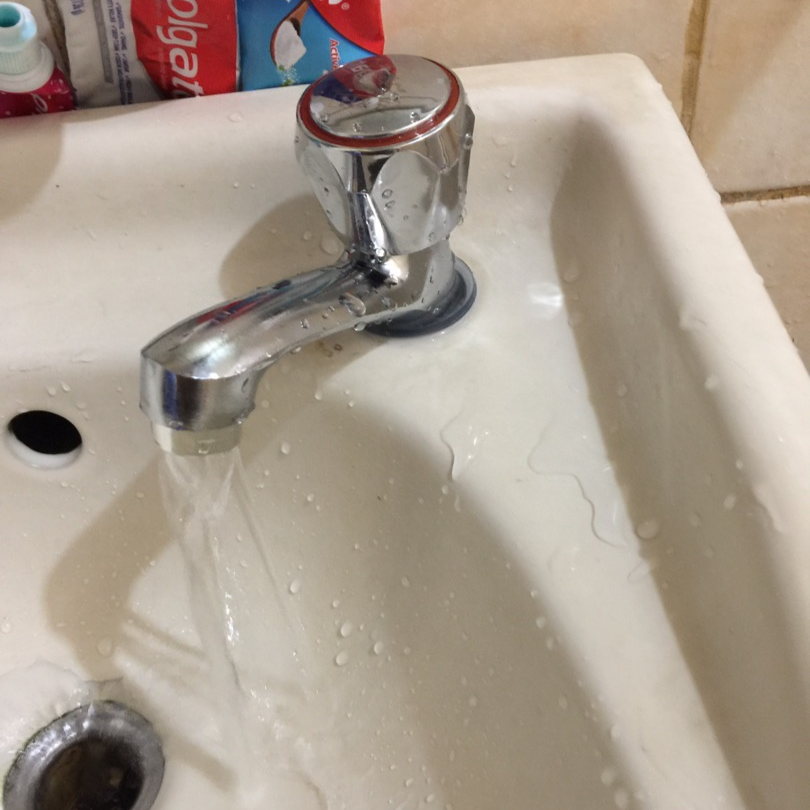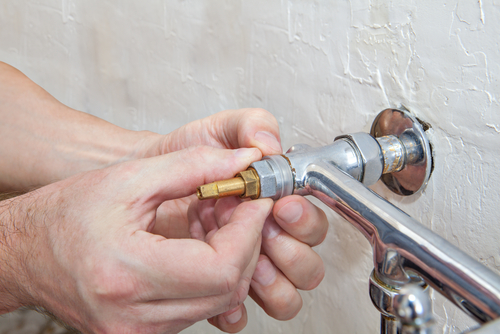Right here down the page you can locate a bunch of high-quality guidance around Why It's Important to Fix Leaky Faucets.

Leaking taps could seem like a minor hassle, however their effect exceeds just the aggravation of the audio. From wasting water to sustaining unneeded financial expenses and health and wellness threats, overlooking a dripping faucet can cause different effects. In this short article, we'll look into why it's essential to address this usual house concern quickly and efficiently.
Waste of Water
Environmental Impact
Leaking taps contribute dramatically to water waste. According to the Environmental Protection Agency (EPA), a solitary faucet trickling at one drip per secondly can lose more than 3,000 gallons of water per year. This not just strains water sources yet also influences ecosystems and wildlife dependent on them.
Financial Costs
Increased Water Costs
Beyond the environmental influence, dripping taps can inflate water costs substantially. The built up wastage with time equates into greater utility costs, which can have been stayed clear of with timely repair services.
Prospective Home Damage
Moreover, long term trickling can bring about damage to fixtures and surfaces surrounding the faucet. Water buildup can cause staining, rust, and also architectural problems if left ignored, leading to additional repair service expenses.
Wellness Problems
Mold and Mildew Growth
The constant visibility of wetness from a trickling tap creates a suitable environment for mold and mildew and mildew development. These fungi not only endanger indoor air high quality however likewise posture health risks, especially for people with respiratory conditions or allergic reactions.
Waterborne Conditions
Stationary water in trickling taps can come to be a breeding place for bacteria and various other pathogens, increasing the threat of waterborne conditions. Contaminants such as Legionella germs prosper in stationary water, potentially leading to significant ailments when ingested or breathed in.
DIY vs. Professional Repair service
Benefits and drawbacks of DIY Fixing
While some may attempt to repair a leaking faucet themselves, do it yourself repair work include their own collection of difficulties. Without appropriate knowledge and devices, do it yourself attempts can worsen the concern or bring about insufficient repair work, prolonging the issue.
Benefits of Hiring a Specialist Plumber
Hiring an expert plumber makes certain that the underlying root cause of the trickling faucet is addressed effectively. Plumbing technicians possess the knowledge and tools to identify and repair faucet concerns effectively, saving time and decreasing the threat of further damage.
Step-by-Step Overview to Taking Care Of a Dripping Tap
Devices Required
Prior to trying to take care of a trickling tap, collect the needed tools, including a flexible wrench, screwdrivers, replacement parts (such as washing machines or cartridges), and plumber's tape.
Common Tap Issues and Their Solutions
Identify the type of tap and the particular concern causing the drip. Typical issues include damaged washers, corroded shutoff seats, or malfunctioning O-rings. Refer to manufacturer instructions or on the internet tutorials for detailed advice on repair work.
Safety nets
Normal Upkeep Tips
To stop leaking faucets, perform regular maintenance such as cleansing aerators, inspecting for leaks, and changing damaged components promptly. Furthermore, consider installing water-saving gadgets or upgrading to much more effective components.
Importance of Prompt Fixes
Attending to trickling taps as quickly as they're seen protects against further water wastage and possible damage, inevitably saving both water and cash in the long run.
Influence On Home Worth
Understanding of Well-Maintained Property
Maintaining a home in good condition, including dealing with maintenance problems like trickling taps, enhances its perceived value and worth amongst prospective customers or tenants.
Influence on Resale Value
Properties with well-maintained plumbing fixtures, consisting of faucets, command greater resale worths in the real estate market. Attending to trickling taps can contribute to a favorable perception throughout property assessments and arrangements.
Environmental Duty
Private Payment to Preservation
Taking duty for repairing dripping faucets lines up with wider efforts toward water conservation and ecological sustainability. Every person's activities jointly make a considerable impact on maintaining valuable resources.
Lasting Living Practices
By prioritizing punctual repair services and adopting water-saving behaviors, individuals add to sustainable living techniques that benefit both existing and future generations.
Final thought
Dealing with a leaking tap exceeds simple convenience; it's a crucial step toward preserving water, reducing financial expenses, and securing wellness and building. Whether via DIY repairs or specialist support, taking action to deal with leaking taps is a little yet impactful method to promote responsible stewardship of resources and contribute to a much healthier, extra sustainable future.
How to Fix a Leaky Faucet: Step-by-Step Repair Guide
A leaky faucet may seem like a simple annoyance, but if it's not fixed promptly, that leak could cost hundreds to potentially thousands. From water damage to mold, mildew, and high water bills, even a tiny leak can be catastrophic if left unattended. Damage like this can even affect the overall value of your home, so it's important to take the right approach for leaky faucet repair. You may need the help of a plumber in some cases, but we've got a few tips you can try on how to fix a leaky faucet before calling the pros.
Four Faucet Types
When you're learning how to fix a leaky faucet, the first step is knowing what kind of faucet you're working with! There are four common types.
Cartridge Faucets
Cartridge faucets come in one- or two-handled varieties. In one-handled cartridge faucets, hot and cold water combines in a single cartridge. In the two-handled versions, hot and cold water are controlled separately and mixed in the faucet.
Ball Faucets
Ball faucets have a single lever you push up and down to adjust the pressure and rotate to change the temperature. A slotted metal ball controls the amount of water allowed into the spout.
Compression Washer Faucets
They're the oldest type of faucet, but they're still used in many homes — especially older ones. Compression faucets have two separate handles that, when turned, raise or lower the washer that seals a water valve. This valve stops water from flowing through the faucet when it is turned off.
Disc Faucets
Disc faucets rarely need to be repaired due to their maintenance-free design. The water flow is controlled by two discs — the upper one raises and lowers against a fixed lower disc, creating a watertight seal. If your disc faucet starts leaking, you may need to replace the seals or clean residue buildup from the inlets.
Fixing a Leaky Faucet
Step 1: Turn Off the Water
Whether you're learning how to fix a leaky bathtub faucet or how to fix a leaky kitchen faucet, always turn off the water supply to your working area when you're fixing a leak. The last thing you want is a flood added to your list of things to fix.
Look for the shutoff valves below your sink or around the tub and turn them clockwise to stop the water flow. If your faucet doesn't have shutoff valves, you may need to turn off the water for the whole house. Check to make sure it's off by turning the faucet on. If nothing comes out, you're ready to start the repair.
Step 2: Take Apart the Faucet
How you disassemble your faucet depends on the type of fixture you have. You can use a flathead screwdriver to remove the caps on top of the handle or handles for cartridge and compression faucets. Inside, you should see handle screws. Unscrew these with a screwdriver to remove the handle.
Disc- and ball-style faucets will typically have an inlet screw near the handle, and removing that will reveal the interior of the faucet.
Detach the Valve Stem
For cartridge- and compression-style faucets, you'll see the inner valve stem or cartridge once you remove the faucet handles. If you have a compression faucet, unscrew the brass valve stem. If you have a cartridge faucet, pull out the cartridge. If your cartridge has been in place for a while, it may require some tools or extra force to remove it due to mineral deposits.
Examine and Replace Parts
Once you've removed the parts, check them out to confirm what needs to be replaced. You may see corroded rubber washers, O-rings, stems, or cartridges. On a ball-style faucet, check the seats and springs for damage.
If you need to repair a leaky disc faucet, check the inlet and seals on the lower disc.
Once you determine what parts must be replaced, visit your local hardware store. Bring the damaged parts with you to ensure you can purchase the correct components to replace them.
Clean Valves and Faucet Cavity
If you've removed a stem or cartridge, you may notice mineral buildup in the faucet's threads. Use white vinegar to clean the valve seat by soaking it for a few minutes, then scrub it away with a soft toothbrush and rinse with warm water. You can also clean the interior of the faucet in the same way.
Reassemble the Faucet
Once your faucet is cleaned and the required parts have been replaced, it's time to reassemble it. Put the pieces back together and slowly turn the water supply back on. Doing this slowly is crucial because too much initial water pressure can damage the new hardware you've just installed.
https://homewarranty.firstam.com/blog/how-to-fix-leaky-faucet

Hopefully you enjoyed our article about Leaky Faucets: Why They Happen & What to Do About Them. Thanks a lot for spending some time to read through our blog post. Sharing is caring. Helping people is fun. Thank you for taking the time to read it.
Comments on “The Causes Behind Addressing a Faulty Faucet”